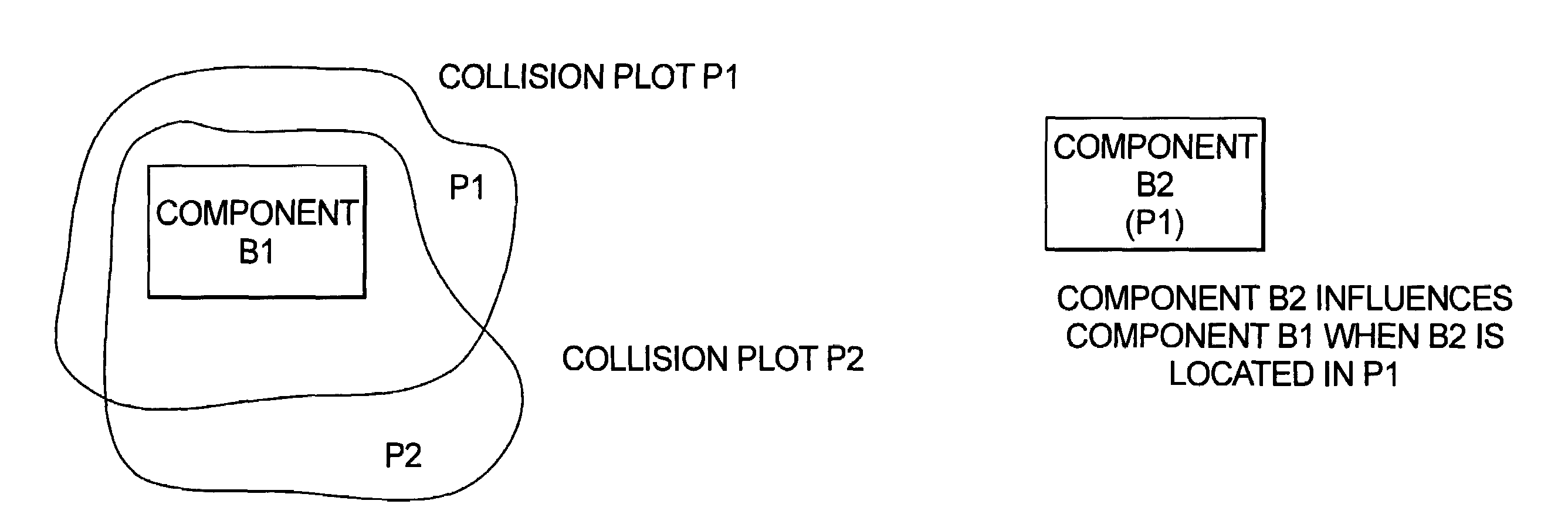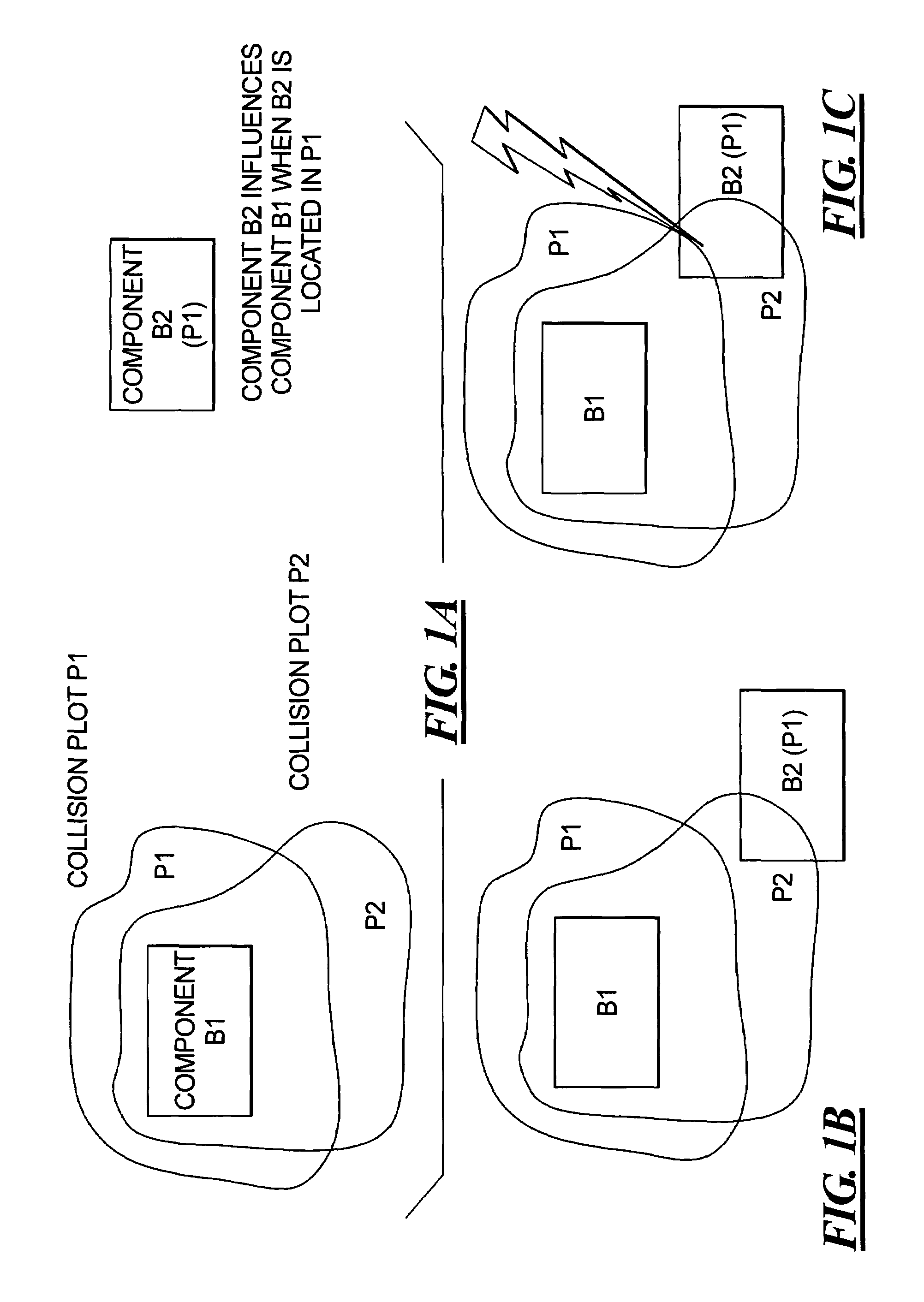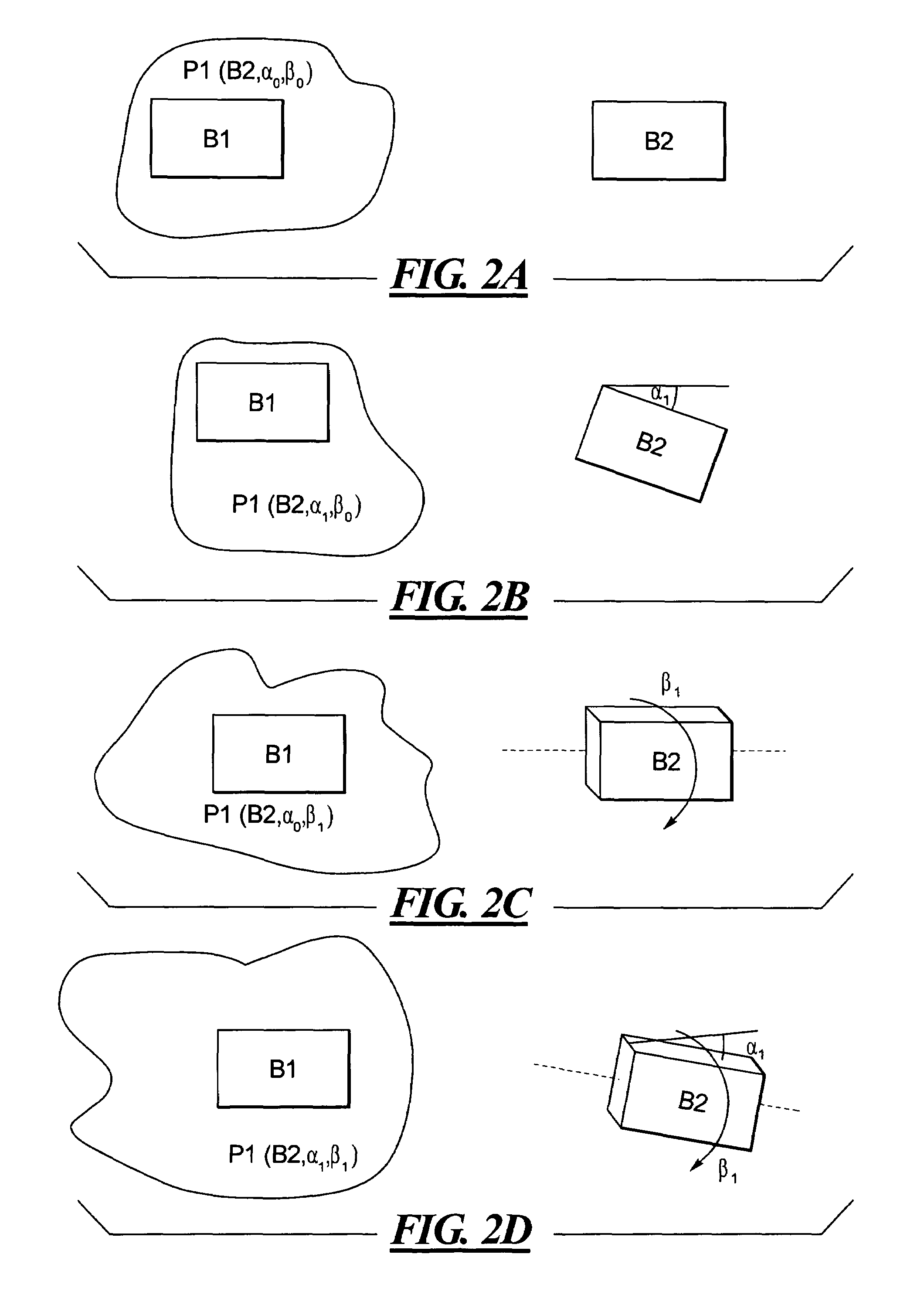Computerized method for adherence to physical restriction in the construction of an ITE hearing aid
a technology of hearing aids and computerized methods, applied in the field of computerized methods for hearing aid construction in the ear, can solve the problems of unoptimized use of the auditory canal space, and achieve the effect of improving the ability to position components
- Summary
- Abstract
- Description
- Claims
- Application Information
AI Technical Summary
Benefits of technology
Problems solved by technology
Method used
Image
Examples
Embodiment Construction
[0018]FIG. 1A schematically illustrates the concept of the use of collision plots in the e-detailing software for constructing an ITE hearing aid. Component B1 has a collision plot P1 logically linked thereto, and component B2 has a collision plot P2 logically linked thereto. The respective collision plots are scatter plots that are determined by suitable measurements, simulations, etc., and are represented in a suitable file format, such as STL. In the e-detailing software, the collision plots are respectively linked to the components associated therewith, so that as the virtual representations of the components are moved or adjusted in the e-detailing software, the collision plot that is logically linked thereto moves correspondingly. As indicated in FIG. 1A, component B2 influences component B1 when B2 is located in collision plot P1.
[0019]FIG. 1B illustrates an acceptable situation for the component B2 with respect to the collision plot P1 of the component B1, because the virtua...
PUM
 Login to View More
Login to View More Abstract
Description
Claims
Application Information
 Login to View More
Login to View More - R&D
- Intellectual Property
- Life Sciences
- Materials
- Tech Scout
- Unparalleled Data Quality
- Higher Quality Content
- 60% Fewer Hallucinations
Browse by: Latest US Patents, China's latest patents, Technical Efficacy Thesaurus, Application Domain, Technology Topic, Popular Technical Reports.
© 2025 PatSnap. All rights reserved.Legal|Privacy policy|Modern Slavery Act Transparency Statement|Sitemap|About US| Contact US: help@patsnap.com



